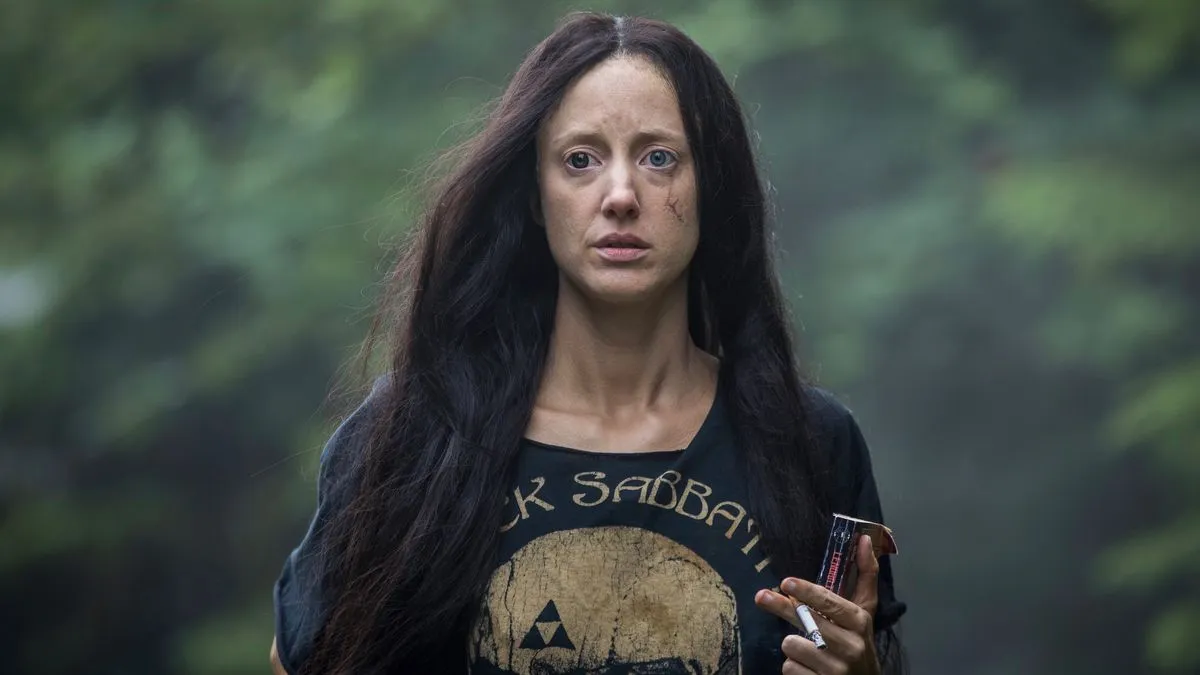Mandy
dir. Panos Cosmatos, 2018

In abstract terms, the sublime — ‘strange and eternal’ — is the human preoccupation in Mandy. It’s an atypical thriller not easily caged by genre boundaries. Nor is it possible to neatly trap its artistic intentions. Focused on the human, Mandy revels in body horror; its subtler aesthetics bordering on the ethereal, alien and other-worldly. It’s a curious blend of romance and terror flecked with influences of science-fiction.
As with Argento’s Suspiria, Mandy’s ‘LSD’-infused colour palette possesses a cosmic significance beyond the film’s 1980s post-psychedelia time placement. Here, colour is the external manifestation of intense feeling: love, fear and bloodlust. Portions of Mandy are experienced through the heat of a pink-red lens. At crucial times this scheme reverts to a cold, dark-water blue. Against brighter tones, its duller contrasting force is a cooler signifier of dread.
Ominous shades of red evoke haunting scenes from modern sci-fi. Called to mind is the sinister blinking crimson light of HAL in 2001: A Space Odyssey. However, the striking hallucinatory visuals of Alex Garland’s Annihilation may be a closer companion. Released alongside Mandy in 2018, Garland’s vision also runs with an atmosphere of dreamlike horror. In both, there is a peaceful eeriness felt uniquely within the disquieting nature setting of secluded backwater US territory.
The titular Mandy (Andrea Riseborough) and ‘Red’ (Nicolas Cage), exist in a love-dream state in the ‘Shadow Mountains’, an enclave beyond society’s reach. The existence of one orbits solely around the other. In bed, Red and Mandy exchange pillow talk about their favourite planets in the solar system. Childlike Mandy paints and studies novels held together by fantastical space imagery. It is an innocent set-up waiting to be turned insidious; REM sleep on the edge of interruption. Soon, oncoming headlights will puncture the dream fog that surrounds the couple — like flashing UFO indicators in the early stagings of an abduction.
In the red haze, Mandy drifts along a dirt track where she is met by her future kidnappers. Spying her from the driver’s seat, their leader Jeremiah Sand (Linus Roache) is possessed by the idea that she is ‘silently’ calling out to him. He decides to fold her into his cosmic destiny. Summoned in the night like horsemen of the apocalypse is a satanic biker gang to carry out his wish. Once Mandy is taken, it is the revenge task of Red — lover transformed by pain into ‘reaper’ — to deliver punishment.
Mandy’s captors are revealed to be post-70s cultists resisting a wave of traditionalist ideals hailed by a Reagan era. Leader Jeremiah is a deranged mystic posing as Charles Manson in Star Wars-esque robes. The film leans into such references with wry wit: ‘Do you like The Carpenters? I think that they’re sensational.’ Pop music is utilised as an amusing distraction from fearful instinct. Moments of extreme terror encourage laughter rather than scares — but not to ill effect. The casting of Nic Cage is a knowing gesture in this regard. The threshold between humour and horror is finer than the ‘Tainted Blade of the Pale Night’ his assailants wield against him.
Mandy is a film of competing halves: love-filled dreams and violent awakenings. Fear emerges from what remains unsaid; voices muted by discordant sound and eyes rendered bloodshot under violent colour. Here, within cinematic limits, Mandy unveils its perverse definition of the sublime: immense and terrifying spectacle. It is unsettling to be lulled into a sense of awe tethered to despair. Mandy declares that innocence, once met with immeasurable horror, becomes lost and irretrievable. It’s a nihilistic thesis put forward by a bleak but arresting film.